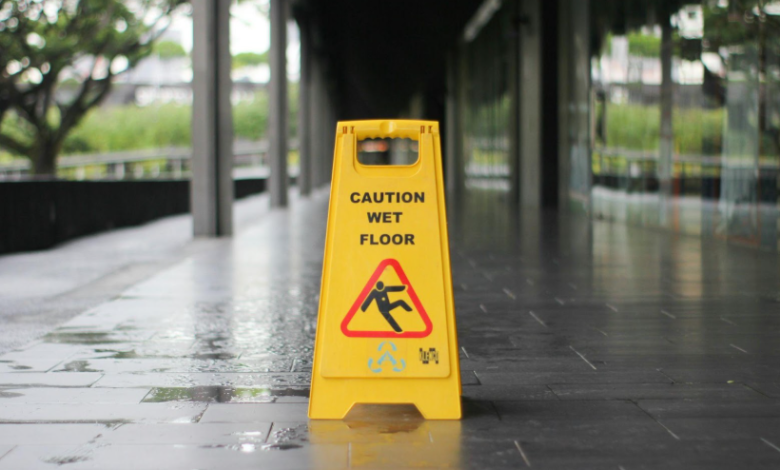5 Tips for Reducing Wet Floor Hazards

Wet floors are a genuine danger. Wet floor slipping can result in injury, time lost from work, or worse. Whether you work from home, in an office, or in commerce, you require a plan. Let’s take five basic and good pieces of advice and dissect them for you to reduce wet floor hazards.
Clean Up Spills Immediately
Clean it the instant you see a spill. Do not wait for liquids to travel very quickly, especially on reflective floors. The longer it is exposed to water, the more slippery it can become.
Keep absorbent materials, such as mops, paper towels, or spill pads, in high-risk areas like entryways, bathrooms, and kitchens. Have a regular practice with your employees to check these areas every hour. It is a minor effort with a huge impact.
Use Obvious Warning Signs
Blind people need to be warned. Wherever there is a wet floor, post clear “Caution: Wet Floor” signs at all times. It is not limited to public areas, even on your own property; warning signs can warn visitors or members of your household to watch their step.
The marks should be very noticeable, yellow, readable, and placed in all areas where individuals are entering the wet environments. Remember to take them off when the floor is no longer wet, so that it does not cause confusion.
See also: Building an Online Presence: SEO Strategies for Family Lawyers
Choosing the Right Floor Surfaces
Some surfaces are naturally less slippery than others. When you are remodeling or constructing an area, it is easy to include things that decrease the risk of slipping. Textured tile flooring, anti-slip floor mats, and sealed flooring can make a significant impact.
In the industrial or business setting, think about using concrete floor finishes that provide you with a non-slip surface as well as protection from moisture. They’re an investment for longevity and safety.
Increase Drainage and Ventilation
Pool water usually indicates poor drainage. Inspect the areas around entrances, bathrooms, and even appliances. Water should drain towards a drain; if it doesn’t, it’s time to fix the problem.
And don’t miss ventilation. Adequate air flow dries floors quicker. Open a window or circulate air with a fan in damp areas such as laundry rooms and basements. It’s a quick but guaranteed method of reducing moisture.
Inspect Floors Periodically
Do not wait for someone to complain. It is a good habit to go through your floors every once in a while. Look for indications of impending water leaks, cracking, or warping.
Some of the damage to the floor can be hidden, especially if you are dealing with old or worn-out surfaces. In this instance, concrete covering not only protects the floor but also provides a better surface to walk on. Make sure that the added material offers traction, not smoothness, to avoid slipping.
Wrapping Up
Slippery floor hazards do not need to be ongoing threats. Act now, put up good warning signs, do it with higher quality material, keep them in good condition, and teach them. You don’t need to hire professionals or spend your whole paycheck on every step. Most of them are things you can do right now. Take responsibility for what’s around you and keep people safe. Clean doesn’t even come close to describing how much a dry floor tells you about a place that cares.
